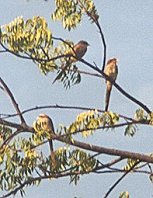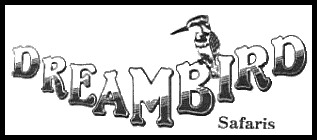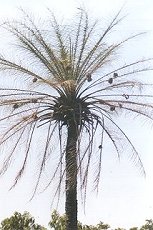Day 1
We will meet you at your hotel in the evening to discuss the iternary.
Day 2
You will be collected at about 7:30 am from your hotel for the short journey to the famous Abuko Nature Reserve. Abuko is an unspoilt relic of the old Gambia and is a must for all visitors with an interest in wildlife. We will look to return at the hotel at about 2 pm.
Day 3
Again we will look for a 7:30 am start. Marakisa is situated close to the southern border with Senegal and is a secondary forest area with small streams. A variety of Raptors can be seen and this is a known site for Painted snipe. African oriole and Blue-bellied roller are common here and we may also see some of the smaller Kingfishers and possibly Touraco's. You will be returned to your hotel by 2 pm.
Day 4
A further 7:30 am pick-up will be made for the short drive to Lamin Village for a short walk around the farmland and the vegetable gardens. Here a variety of smaller birds including Fire-finches and Warblers, as well as Doves and Woodpeckers should be found. Temmink's courser is a speciality here. We will end our visit at Lamin Lodge, where Fiddler crabs and Mudskippers can be seen and Ospreys, Terns and the occasional Goliath heron. Return to the hotel at noon.
Day 5
Rest day.
Day 6
You will be collected at 7:30 am for the drive to Tanji, the newest of The Gambia's reserves, situated on the coast, south-west of Serekunda. Since receiving reserve status in 1994, over 300 species have been recorded here and we will spend the day exploring the scrubland, where Bee-eaters, Rollers and Shrikes together with several species of Raptors should be seen. The area is also good for Sunbirds as well as Red patas monkey. Lunch will be taken at a pleasant bar on the beach during the hottest part of the day and further birding will be done in the afternoon, when we will spend some time 'Tern-ticking'. It is perfectly possible to see eleven different Tern species today. Return to the hotel at 5:00 pm.
Day 7
Rest day.
Day 8
Leaving your hotel at 6:00 am for this long journey should mean that most of the traveling is completed before the hottest part of the day. During the journey to Georgetown, we will be stopping at regular intervals when anything of interest is seen. A break will occur at Brumen Bridge where Thick-knee are common and Goliath heron and Ground hornbill are regularly seen. Shortly after the ferry crossing onto the island, we will reach one of the camps to spend the night there.
Day 9
We leave at 7:30 am for the 90 minutes drive to Basse, a lively market town close to the eastern extreme of the country. The town is well known to birders as the site for Egyptian plover and they can usually be seen on the muddy river margins up to the end of February. The river here, which remains tidal despite the distance from the open sea, is also good for Kingfishers. Another good bird which is unlikely to be encountered elswhere but is regular here is the Red-throated bee-eater. We will aim to return to Georgetown by early afternoon to give time to explore the camp surroundings, which are good for a wide variety of birds, including Starlings, Owlets and Barbets. Spur-winged geese can regularly be seen flying along the river, while Oxpeckers hitch a ride on the local cattle. There will also be an opportunity to see the old ford and slave pens, whoch still excist from the time when the business relations between Europeans and Gambians was rather different to that of today.
Day 10
After breakfast we leave at 8:00 am for the drive back down the river to Tendaba, hopefully arriving early afternoon. The camp here features an open air restaurant and bar overlooking the river, which remains over a mile wide at this point. Many different Waders and Herons will be seen along the muddy shoreline, while Raptors overhead should include Osprey, Grasshopper buzzard, Bateleur and possibly even Martial eagle. From the tracks around the camp, we should see Brown parrot as well as many Finches and Warblers. The creaks are also home to the Clawless otter, which is seen regularly among the mangrove roots.
Day 11
Early this morning, we have the option of taking a pre-dawn walk to look for owls and listen to the dawn chorus. After an early lunch, we will make our way back to the coast returning you to your hotel around 5:00 pm.
Day 12
Rest day.
Day 13
We will leave your hotel at 7:30 am for the short journey to Yundum, which is another local area which will give the opportunity to catch up with some species which may have eluded us so far, such as Chestnut-bellied starling. The area is also good for Shrikes, including Black-crowned tchagra, Gambian puff-back and the beautifull Barbary shrike. The Gambia's two terrestrial Kingfishers, Senegal and Striped, are also often found here. Return at 1:00 pm.
Day 14
Another 7:30 am start for the drive to Bund Road, which is a causeway linking the capital, Banjul to Bakau and the majority of tourist hotels. This is a very rich area for birdlife, with Flamingo's, Egrets and Ibis feeding along the coastal side, while the mangrove pools on the opposite bank regularly hold Western reef and Black heron. We will return to the hotel at 2:00 pm.
Day 15
Return home.



